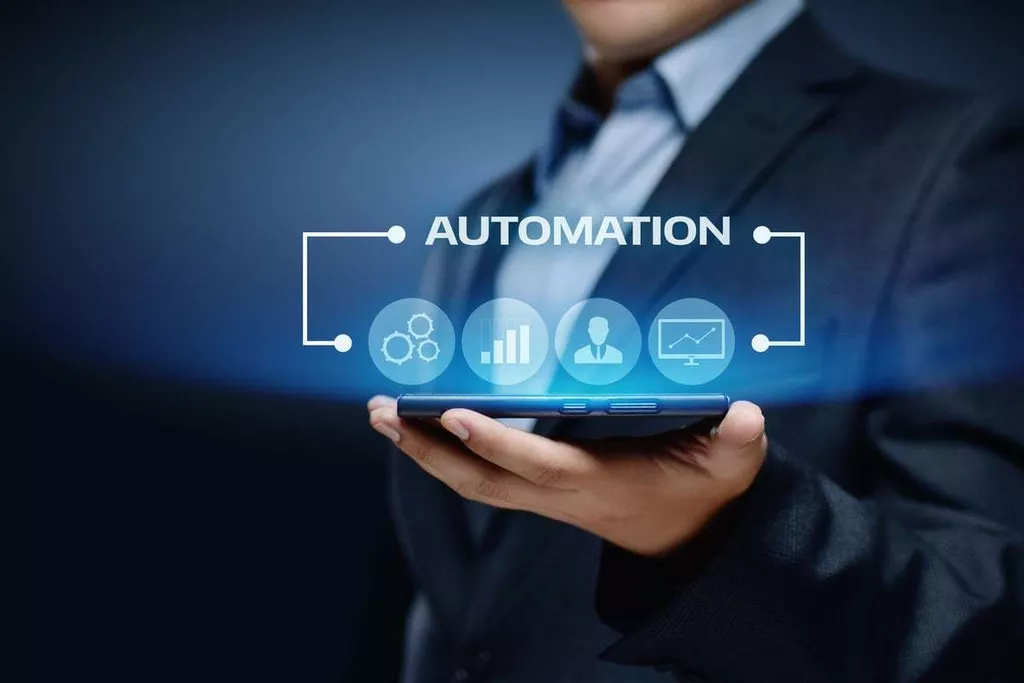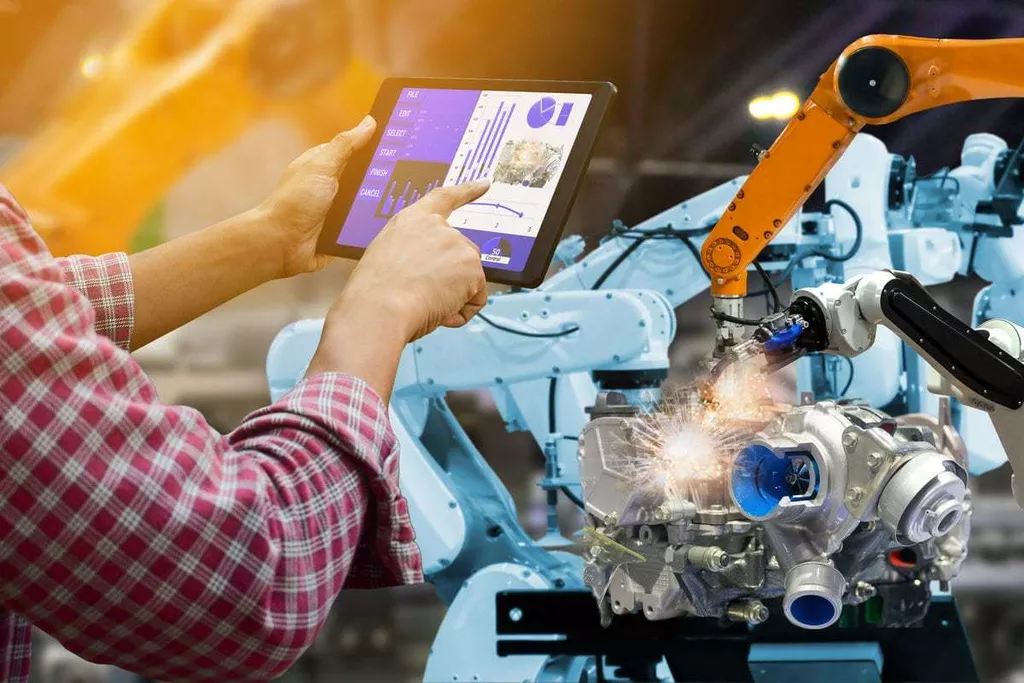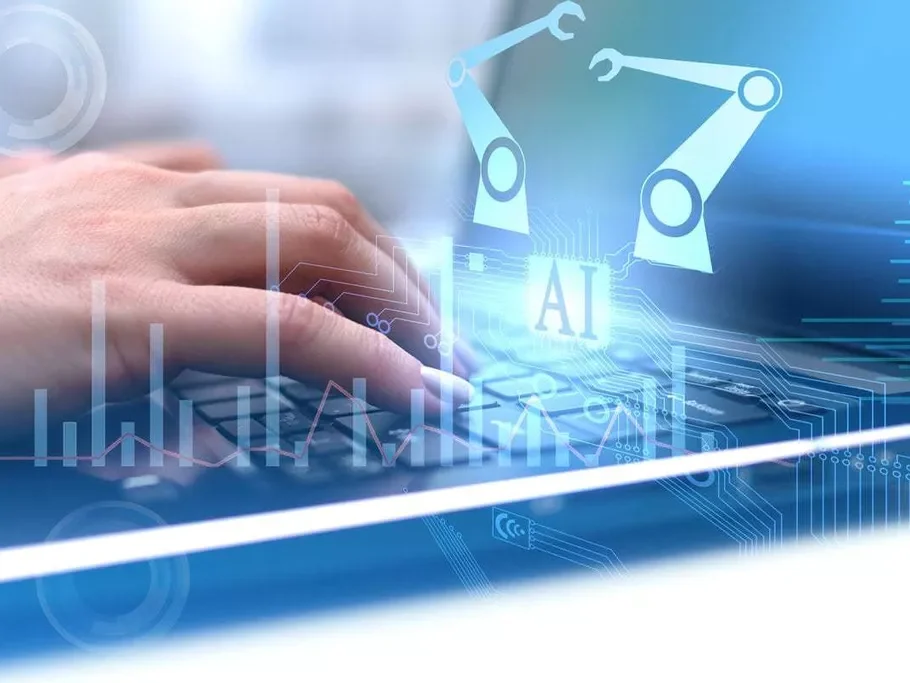Since the beginning of the active use of the Internet, major global manufacturers have decided to digitize a large part of their activities. Today, vast amounts of data have been transferred from machines installed in production companies. Many entrepreneurs don’t know what to do with so much information.
Companies successfully transport received data to reduce costs and increase efficiency with the help of artificial intelligence.
Below are some fascinating facts:
- According to experts, by 2027, the artificial intelligence production market will exceed $9.89 billion.
- Manufacturers from Europe are already reaching the peak of artificial intelligence; for example, 96% of companies from Germany say that they are ready to introduce different types of AI into their work soon.
- According to studies by the European Commission, about half of the production in various industries may close because of a large proportion of defects.
The development of artificial intelligence has launched a new production era in manufacturing processes. Nowadays, specialists do not need to spend time on long and tedious checks; instead, computer vision does this work. It provides a higher level of quality inspection in various enterprises. Let’s discuss the benefits and examples of using AI and how to implement it in your company.

Use cases of AI in the factories
Artificial intelligence explores how machines process data and make decisions without human intervention. Some people believe that AI’s main aim is to imitate humans’ thoughts, but this is not always true. While live agents are good at specific tasks, they are not perfect. The best artificial intelligence models may think and make more accurate decisions than live employees. There are many variants for how industrial AI will revolutionize manufacturing.
Generative design
The generative design follows the engineering attitude to design using machine learning techniques. The designer enters the leading indicators of products (length, width, weight, height, etc.) in a particular program; engineering software shows all original results with given values. It allows companies to create hundreds of design variants for each product.
Creation of robotics
Businesses may use industrial robots to automate routine tasks, decrease human mistakes, and shift employees to other activities. The scope of robots is limitless; they can assemble structures, paint, inspect, drill holes, perform grinding, etc.
The first samples of industrial robots appeared in the 70s, but the development of AI has made it possible to increase their accuracy and productivity. Specialists can train modern robotics to perform even better than people.
Cobots are popular robotics applications that utilize computer vision to safely collaborate with workers on tasks that cannot be automated entirely.
Change in the cost of raw materials
Many manufacturers face problems caused by sharp fluctuations in raw material costs. They must adapt to cost changes to maintain their market niche. AI-based software makes accurate material cost predictions, so the plant knows what to prepare for.
Making digital twins based on AI
Digital twins are a virtual copy of an actual product that allows the manufacturer to experiment with different features and appearances to increase asset performance. They help do the following types of work:
- Product development: specialists may create a digital image of a product before its physical version appears. It allows the company to collect information from the virtual copy and improve the original sample by analyzing the data.
- Design work: recently, all users have been looking for personalization so that manufacturers can use digital chisels to develop different types of products to meet the needs of a wide range of customers.
- Growth in enterprise productivity: a digital copy allows the company to track and analyze your entire manufacturing process to understand where quality issues may arise and how you can increase productivity.
After studying the digital version of the product, the manufacturer gets a complete picture of what resources will be required in the production process. With the help of special software, you may automate the replenishment procedure to avoid downtime.
Quality assurance
All companies strive to maintain the established quality of services or products. Assembly lines are networks connected with an autonomous mode of operation; their operation is provided by sets of parameters and algorithms that allow producing high-quality products. AI tools can easily detect deviations from standard input data using machine vision, so defects will be instantly noticed. If the quality of the finished product is below the set parameters, the artificial intelligence system notifies about such deviation so that employees may take action.
Inventory control
Machine learning techniques enable inventory planning as they can easily forecast demand and create a supply plan. AI allows you to predict demand much more accurately than when we use traditional methods. Inventory management enables you to minimize the risk that, at the right time, there will be no raw materials in the warehouse or, conversely, the materials will lose their original properties due to long storage.
Optimization of all processes
AI helps to detect and eliminate shortcomings in the company’s activities. For example, a company wants to guarantee timely delivery to all customers. But it has branches in different parts of the country, and building a transparent supply chain is problematic.
Thanks to artificial intelligence tools, company management may regularly compare the performance indicators of various regions, including analyzing each stage of production (its price, duration, and labor costs). Such information allows for optimizing processes, identifying problem areas, and taking immediate action.
Pros and cons of utilizing artificial intelligence in the production
Modern companies can automate different tasks, reducing scrap rates, downtime, and costs thanks to AI technologies. Advanced artificial intelligence independently makes decisions, collects and processes data, looks for patterns, and generates recommendations. There are other arguments in favor of using the latest technologies:
- Round-the-clock production: people cannot work 24/7; they need time to sleep, eat, and rest. If you need the production concern to function day and night, it is necessary to introduce at least three shifts per day. Robotic systems do not know what hunger and fatigue are. They expand the production potential of the company.
- Security: everyone makes mistakes from time to time, especially when stressed or tired. AI-assisted remote access control reduces human resources, which is especially important for hazardous activities.
- Reducing operational costs: enterprises have not yet adopted AI to avoid significant expenses. However, such investments are distinguished by high profitability, which increases over the years. The enterprise will benefit from cutting operating spending when AI is involved in routine activities at production facilities.
- Growth in efficiency: artificial intelligence deals with a large amount of data that can be analyzed to understand customer preferences better. The information base also allows you to make forecasts and look for patterns and inconsistencies in the production process.
- Increasing staff productivity and easy access to data: engineers can immediately determine what kind of materials to use in any given situation, and analysts can use the reports to predict how the number of orders will change.
- Instant decision-making: the latest digital technologies allow companies to share simulations, resolve urgent business issues, and share other critical data in real time, no matter where they are.
- Predictive maintenance of equipment: by installing special sensors on production lines to monitor performance levels and conditions of use, AI can predict possible failures and eliminate any risks before they occur.

Despite all these advantages, AI also has some disadvantages that everyone who plans to introduce technologies into their production should remember:
- High cost: AI reduces labor expenses but will cost a substantial sum to implement.
- You must find specialists: today, AI is at the development stage, so there are not so many professionals who know how to work with technology correctly.
- AI has its weak points: it is subject to cyber-attacks. At the same time, over time, fraudsters have come up with more and more sophisticated hacking methods that can disrupt the entire production process.
The manufacturing industry often has to deal with outdated, biased, or erroneous information, and the success of the implementation of artificial intelligence largely depends on the quality of the data. In some manufacturing facilities, the data relies on unrelated systems patented as proprietary to the company. It is not the best option for AI-based comprehensive analytics.
Tips for successfully implementing AI in manufacturing
Artificial intelligence in manufacturing facilities allows a machine to use the available data to make decisions instead of employees. It is crucial for predicting and understanding various anomalies. We have put together some professional recommendations on how to implement AI in your production successfully:
- Select a department to implement the pilot project: if the company has several offices, it is necessary to identify one firm to test AI-based solutions and appoint a responsible employee.
- Explore unit economics: When implementing AI, users typically choose the cloud because it provides fast access to computing power by combining CPU, memory, and disk to create low-maintenance virtual machines. The cloud benefits data storage, and computing power is more expensive. It is essential to analyze cloud providers’ conditions to find the most profitable solution.
- Avoid technical blockages. It will be problematic and expensive for you to migrate if all the information is stored in one cloud provider.
- There is no one-size-fits-all solution: some vendors offer production objects to use a ready-made AI-based solution, for which the company needs to substitute its data. Do not trust such promises. The optimal AI model is based on understanding the enterprise’s production processes and determining its activities’ priorities.
Artificial intelligence technologies make all employees smarter, not just operating personnel. Using machine learning, you can automate the interaction with spreadsheets, visualizing information on the analytical department employees’ screens, where they are updated daily, and the company’s management can view the data at any time.
The future of artificial intelligence in the manufacturing
Opinions of experts about the future of artificial intelligence differ. Some professionals are confident that we will achieve the reality described in science fiction, while others expect a simple expansion of today’s technologies. The most significant change will be more stringent data selection in the coming years. AI tools for manufacturing themselves may not do as much as we would like. As the capabilities of the Industrial Internet of Things expand, workers will receive more information, which will help AI systems perform production tasks more efficiently.
Thanks to artificial intelligence, fully automated factories may appear shortly, where goods production will occur with minimal human monitoring. The conquest of new technological peaks is possible only if humanity continues the trend toward innovation. The main thing is to have a good idea. You can combine several tools or develop a new use of known technologies; such innovations change the production landscape and guarantee the company a competitive advantage.
